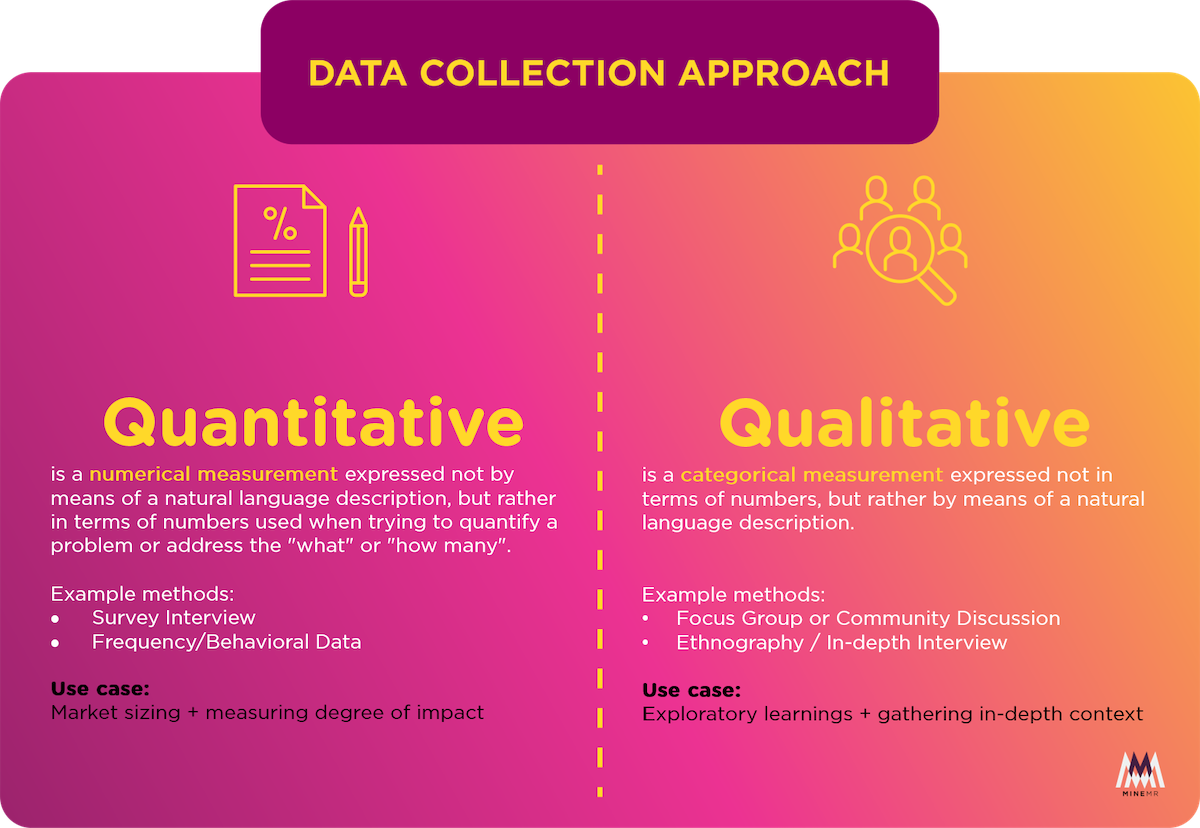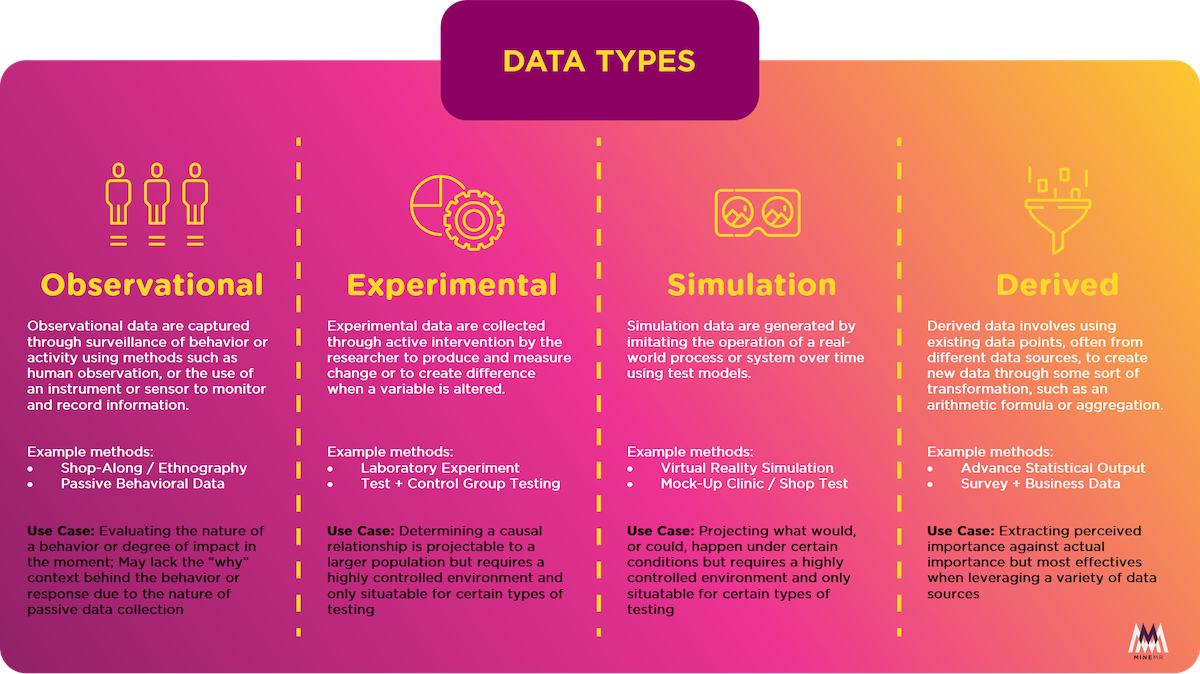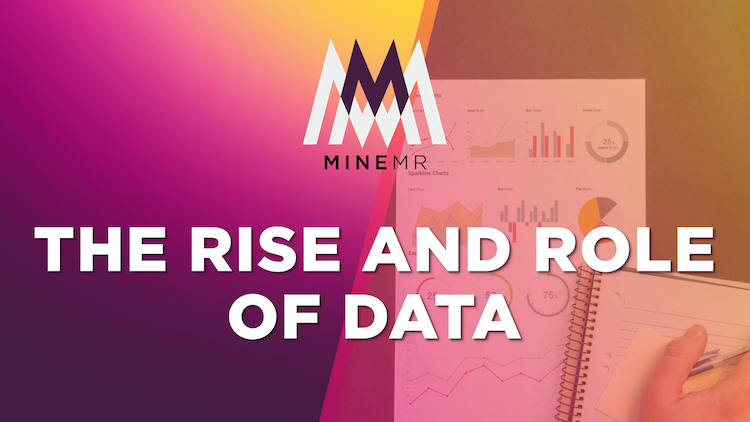If you’re in a successful business, you likely use data in some way. Whether you’re collecting customer feedback, testimonials, NPS scores or implicit associations, your behavioral “big data” library form the foundation of product development efforts, brand positioning and customer service. It doesn’t matter who you are or what line of business you’re in — market research and customer feedback are critical. If you’re in a successful business, you likely use data in some way. Whether you’re collecting customer feedback, testimonials, NPS scores or implicit associations, your behavioral “big data” library form the foundation of product development efforts, brand positioning and customer service. It doesn’t matter who you are or what line of business you’re in — market research and customer feedback are critical.
How data helps your business:
- Sheds light onto what you don’t know and opportunities / solutions you might not have considered
- Gives you and key stakeholders more assurance to make informed decisions
- Offers a system of evaluation to understand the impact of your efforts / investment
With the number of reasons to leverage data continuing to increase, it is undeniable the rising importance of having that data to back-up and guide those internal big strategic moves. The greater question is do we have the right data? This question becomes ever more relevant especially in today’s fast evolving technological advancements in the speed, volume, and capabilities of data collection.
What data is available for your business:
- General public / census data that is available through government and non-profit organizations
- Topical secondary data that can be purchased through syndicated research companies
- Custom primary data that can be sourced through your internal business or data partners
As professionals in the market research industry, we can’t escape the loud sentiment of which traditional market research is dying from the growing value of data sources collected through emerging technology (i.e., behavioral data is better compared to self-claim/perceptual response). The reality is, we’ve been hearing the concerning sentiment for many years and traditional market research is still not dead and won’t be. Just like in each of our closets, we have garments for cold days and ones for hot days, but the best outfits are the ones we mix and match that express our individuality – each data type has an important role and value depending on the situation. It is best when used together leveraging each data type’s strengths to provide a holistic picture.
Value of observational/big data: The large data sets allow for comprehensive analysis to reveal patterns, trends and associations of human behavior and interactions.
Drawback: Data sets can be too large / complex and require machine learning to process thus results can be too heavily reliant on algorithms without the “why” context over business sense (i.e., identifying the fastest route by time vs. most enjoyable for driver).
Value of self-claimed/perceptual data: The nature of response allows for understanding of perceptual views, attitudinal and aspirational context of human behavior and interactions.
Drawback: Data sets can be limited as response are typically sourced through qualitative interviews or quantitative surveys thus results yield a higher margin of error depending on sample quality and volume of response collected.
Data may be grouped into two core methodological approaches quantitative vs. qualitative and four main data types based on data collection methods: observational, experimental, simulation, and derived. The type of research data you collect may affect the way you interpret results.



